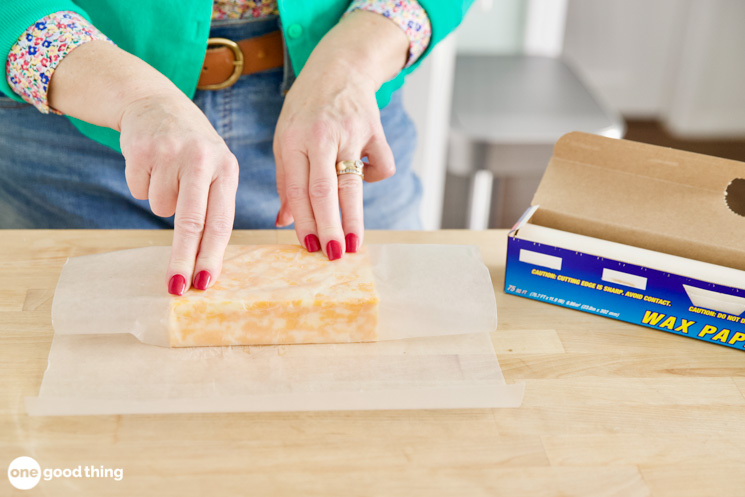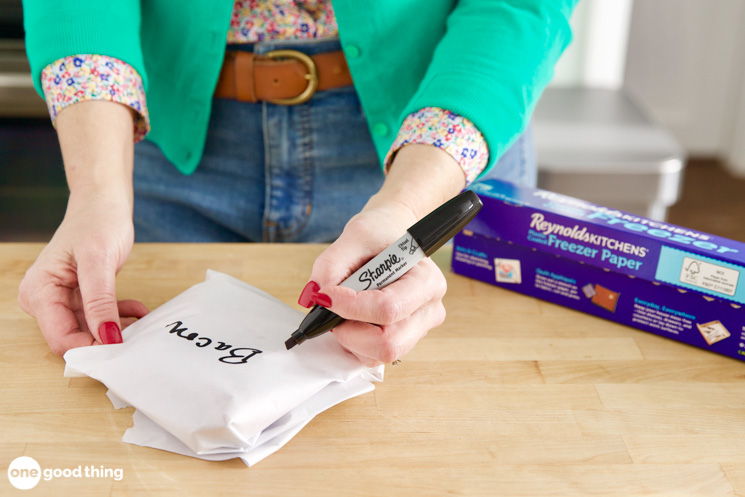
When it comes to food storage products at your local supermarket, there are a lot of options! In addition to the staples like plastic wrap and aluminum foil, there’s also parchment paper, wax paper, and freezer paper. I’ll admit that up until recently, I didn’t know much about the differences between these materials, or which one I should use for particular foods.
I finally got fed up with being mystified in the food storage aisle, so I decided it was high time to learn a thing or two about each of the different kinds of materials we use in the kitchen for a variety of tasks. Those of you who have been wondering the same things will have the answers to your questions by the end of this post!
And if you know of any great ways to use any of the kitchen materials listed here, I’d love to hear about it—leave a comment at the bottom of this post!
Related: 9 Of The Best Ways To Use Plastic Wrap Around The House
5 Food Storage Materials And When To Use Them

1. Parchment Paper
Because parchment paper can withstand temperatures up to 420°F, it’s ideal for baking and other kitchen tasks. For instance, you can roll out a piece of dough between two sheets of parchment paper and the paper will easily peel away when you’re ready to use it.
Parchment paper is also useful because it’s great at retaining moisture. Many people use parchment paper to create individual pouches for cooking fish or chicken and veggies together. The parchment paper keeps the moisture inside the pouch, steaming the food and keeping it from drying out. The paper may get saturated with moisture during this process, but it stays strong and makes cleanup easy!

2. Wax Paper
Wax paper is a lightweight paper coated in a thin layer of food-grade wax. It is similar to parchment paper in that it can help prevent food from sticking to various surfaces, but unlike parchment paper and other materials, it CANNOT withstand high temperatures. In fact, it can easily catch fire in an oven, so you don’t want to put it in there!
One advantage of wax paper is that it is often more affordable than other options. Since it’s cheap, you can use it to line your counters when working with messy foods like chocolate, sprinkles, and breadcrumbs.
Wax paper is also breathable, which makes it a great choice for wrapping and storing cheeses and sandwiches. Moisture can pass through the paper and prevent cheeses and breads from getting slimy or soggy.

3. Aluminum Foil
Unlike wax paper, aluminum foil is NOT breathable. Its impermeability makes it great in the freezer, because it protects food from drying out while preventing potential odors from permeating into your frozen foods.
But the most useful part about aluminum foil is its ability to withstand extreme temperatures. Use it to cover roasts in the oven, or to wrap up racks of ribs. Or you can just make your life a little easier by lining pans with it, making cleanup a breeze.

4. Plastic Wrap
Plastic wrap is great for covering up bowls or containers that are going into the fridge to help keep food fresh. Some brands make a “microwave-safe” plastic wrap that you can use to control splattering when reheating things in your microwave. (If it doesn’t clearly state that it’s safe to put in your microwave, don’t—better safe than having to clean up a melted plastic mess!)
Another useful application for plastic wrap is to use it for “sous vide” cooking. Wrap a piece of chicken or fish tightly in several layers of plastic wrap, ensuring that the plastic wrap forms a well-sealed pouch. Submerge the pouch in water that is just barely simmering, and leave it in until your chicken or fish is cooked through. Moist and delicious!

5. Freezer Paper
Freezer paper is coated with a thin layer of food-grade wax, but only on one side—think of it as wax paper on one side and parchment paper on the other. It was designed to be used for freezing meat, with the waxed side against the meat itself. The wax prevents moisture loss and protects the surface of the meat, while the unwaxed exterior can be written on to label and date the item.
Freezer paper makes a great crafting material, too! The “shiny” (waxy) side of can serve as a temporary adhesive when heated with an iron. Quilters often use freezer paper for appliqués, cutting a shape out of freezer paper and then ironing the shape, wax-side down, to their chosen fabric. They can then cut around the paper, and even peel it off and reuse it several times.
Another crafty application for freezer paper is to use it as a stencil. Cut away a design from a piece of freezer paper, iron it wax-side down to a t-shirt, pillowcase, or tote bag. Then you can spread a layer of fabric paint onto your item, and when the freezer paper is removed, your shape will be perfectly painted on your item.
What’s your go-to food storage material and what do you use it for?
Did you find this article inspiring? Let us know by pinning us!
